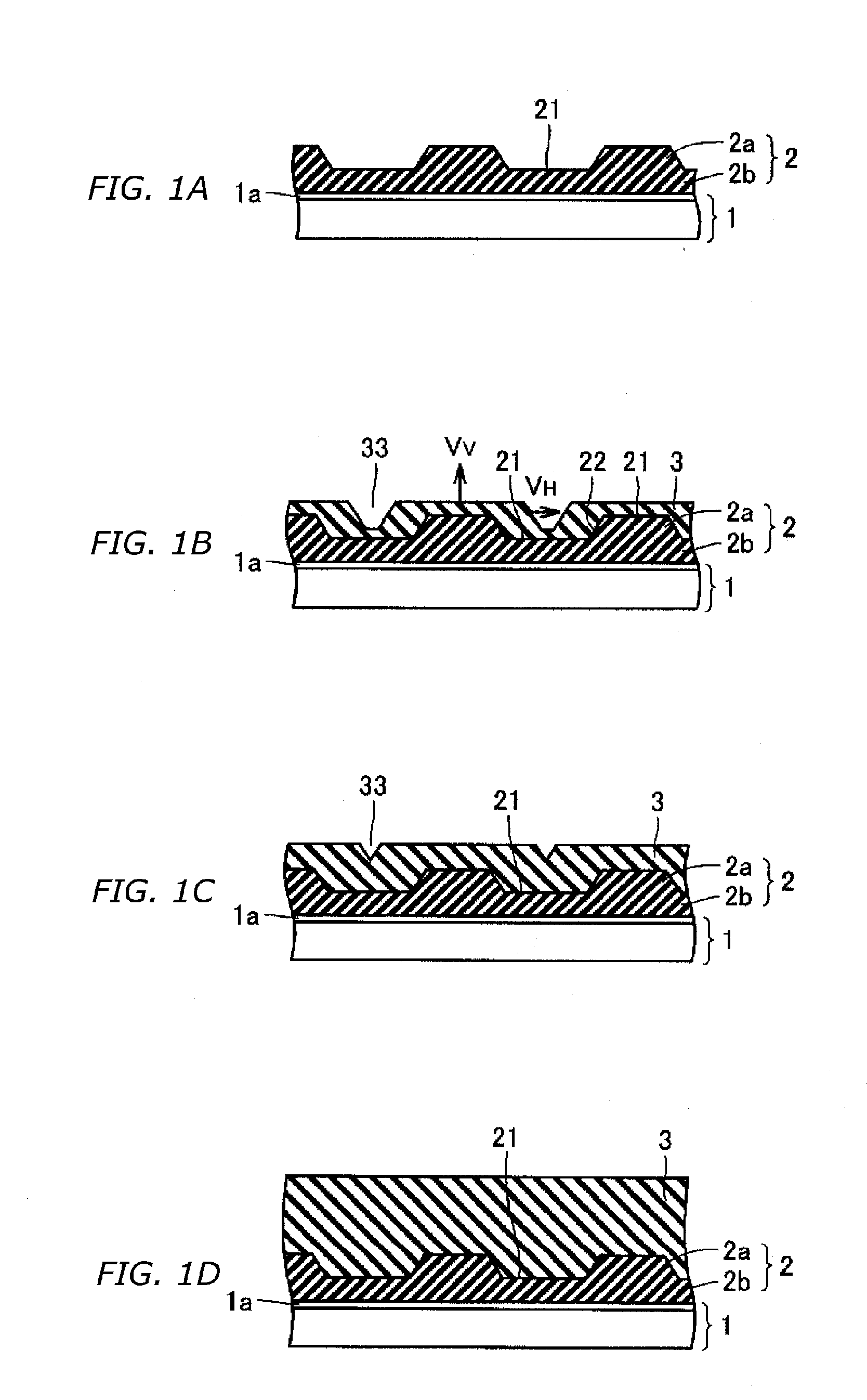Group III Nitride Crystal Substrate, Method of Its Manufacture, and Group-III Nitride Semiconductor Device
a nitride crystal and substrate technology, applied in the direction of crystal growth process, polycrystalline material growth, chemically reactive gas, etc., can solve the problems of low crystal surface planarity, slow crystal growth, low dislocation density, etc., and achieve low dislocation density and low cost.
- Summary
- Abstract
- Description
- Claims
- Application Information
AI Technical Summary
Benefits of technology
Problems solved by technology
Method used
Image
Examples
embodiment examples
[0052] Group-III nitride crystal substrates, and methods of manufacturing the substrates, involving the present invention will be more specifically explained by means of Embodiment Examples 1 through 7 and Comparative Examples 1 through 3.
example 1
[0053] Reference is made to FIG. 1. GaN crystal as a first Group-III nitride crystal 2 was grown by a flux growth technique on the (0001) plane of a wurtzitic GaN substrate, serving as the base substrate 1, having a dislocation density of 1×108 / cm2 and measuring 10 mm×10 mm×300 μm thickness, a 10 mm×10 mm face being the (0001) plane. Specifically, as illustrated in FIG. 5, the GaN substrate was arranged in the center of an alumina crucible, serving as a reaction chamber 4, with the (0001) plane facing upward, and 2.0 g metallic Ga and 1.0 g metallic Na (Na flux) were put into the alumina crucible and heated to form on the (0001) plane of the GaN substrate 800° C. molten Ga—Na, as a melt 7, (the surface level of the melt was 2 mm); and by supplying N2 gas into the Ga—Na melt for 3 hours to bring the pressure to 50 MPa, GaN crystal, having features 2a being in the form of hexagons when viewed from overhead and trapezoidal in section, as illustrated in FIG. 2, was produced as the first...
example 2
[0056] GaN crystal as a first Group-III nitride crystal was grown on a GaN substrate by a flux growth technique in the same manner as in Example 1. The dislocation density of the features of the first Group-III nitride crystal was 7×105 / cm2, and the average dislocation density overall of the features and the floor was 8×106 / cm2.
[0057] Next, GaN crystal as a second Group-III nitride crystal 3 was grown on the first Group-III nitride crystal by HVPE. Specifically, onto the substrate on which the first Group-III nitride crystal had been grown and in a molar ratio of 10:1000:7000, GaCl gas, NH3 gas, and H2 gas (carrier gas) were supplied at 1030° C. and 101 kPa and at a total gas flow rate of 8010 sccm for 1 hour to grow a 5 μm-thick GaN crystal as a second Group-III nitride crystal, whereby a GaN crystal substrate was produced. In this case, the dislocation density of the second Group-III nitride crystal was 7×106 / cm2. The surface roughness Rp-v was 0.5 μm, and hexagonally shaped feat...
PUM
| Property | Measurement | Unit |
|---|---|---|
| roughness | aaaaa | aaaaa |
| peak-to-valley roughness | aaaaa | aaaaa |
| height | aaaaa | aaaaa |
Abstract
Description
Claims
Application Information
 Login to View More
Login to View More - R&D
- Intellectual Property
- Life Sciences
- Materials
- Tech Scout
- Unparalleled Data Quality
- Higher Quality Content
- 60% Fewer Hallucinations
Browse by: Latest US Patents, China's latest patents, Technical Efficacy Thesaurus, Application Domain, Technology Topic, Popular Technical Reports.
© 2025 PatSnap. All rights reserved.Legal|Privacy policy|Modern Slavery Act Transparency Statement|Sitemap|About US| Contact US: help@patsnap.com



